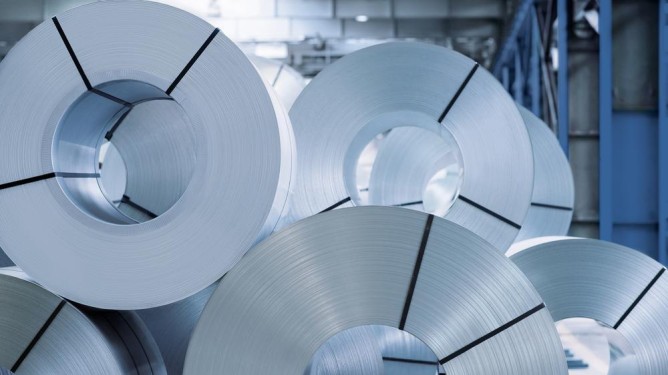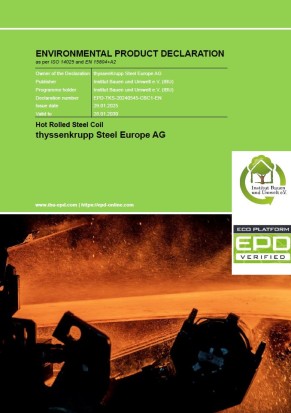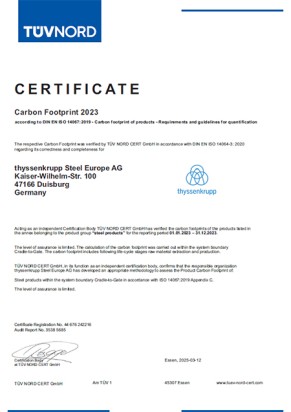Customer benefits of EPDs and PCFs
For many customers, one of the most important requirements on the road to climate neutrality is transparent proof of the environmental impact of the materials used. The good news is that thyssenkrupp Steel is now able to provide EPDs and PCFs for its entire range of flat steel products. “This enables us to provide our customers with targeted support in fulfilling their reporting obligations and market requirements,” explains Lisa Schultz from Environmental Protection Department, who is responsible for and drives forward these issues at thyssenkrupp Steel.
More security for the construction and automotive industries thanks to product-related environmental declarations
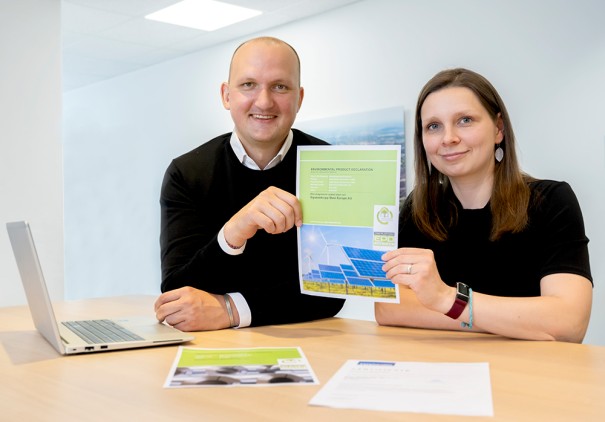
The environmental certificates are particularly relevant for two customer groups: For the construction industry, EPDs have long been standard in the context of sustainable tenders and certifications and will be mandatory in the future. Schulz: “Anyone who competes here without verified evidence will find it increasingly difficult to win contracts.” The situation is different in the automotive industry, where the focus is usually on the product carbon footprint (PCF), i.e., the global warming potential (GWP) expressed as a CO2eq value that a product causes along its manufacturing chain.
Both certificates complement each other - and yet they are fundamentally different. While EPDs are general declarations for product groups, PCFs, which are calculated in accordance with ISO 14067 and whose conformity is regularly checked and confirmed by TÜV Nord, can be calculated specifically for a specific product and a specific customer. EPDs are based on comprehensive life cycle assessments in accordance with European standards and are verified by independent bodies. Their informative value is correspondingly high, especially in legally secure contexts.
The EPDs from thyssenkrupp Steel are created based on the methodology of the IBU (Institut Bauen und Umwelt e. V.) – one of the leading program holders in Europe. They comply with the requirements of EN 15804 and ISO 14025, which is particularly recognized in the construction industry. They include key figures on CO2 emissions, resource consumption, acid or eutrophication potential and much more. In short, they provide a detailed picture of the environmental impact of a steel product over its entire life cycle.
Steel in use: standards for the green transformation
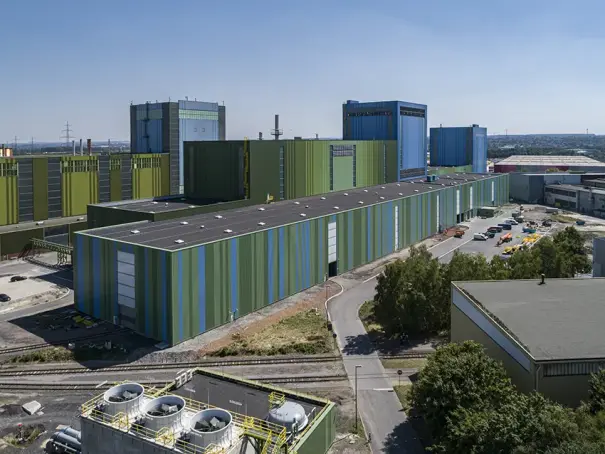
"With our wide range of EPDs and PCFs, we provide our customers with easy access to valid environmental information. Anyone using steel from Duisburg can now integrate it even better into their sustainability strategy and rely on verified and credible certificates," explains Lisa Schulz. This creates competitive advantages and contributes to the further development of value chains towards climate neutrality.
Internally, the move also sends out a signal: We have succeeded in processing the entire data situation along the diverse product lines in such a way that verifiable EPDs and PCFs are created. Those who offer such transparency today are not only helping customers - they are setting standards for an industry in transition.
EPD compared to PCF
| Aspect | EPD (Environmental Product Declaration) | PCF (Product Carbon Footprint) |
|---|---|---|
| Focus | Overall environmental impact over the product life cycle | CO2 emissions along the supply chain |
| Target group | Construction industry, architects, project developers | Diverse industries such as automotive manufacturers, CSR managers |
| Standards | ISO 14025, EN 15804 | ISO 14067 |
| Validation | Third-party verified, published by IBU | Third-party verified by TÜV Nord |
